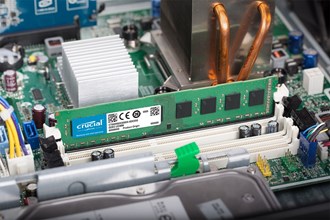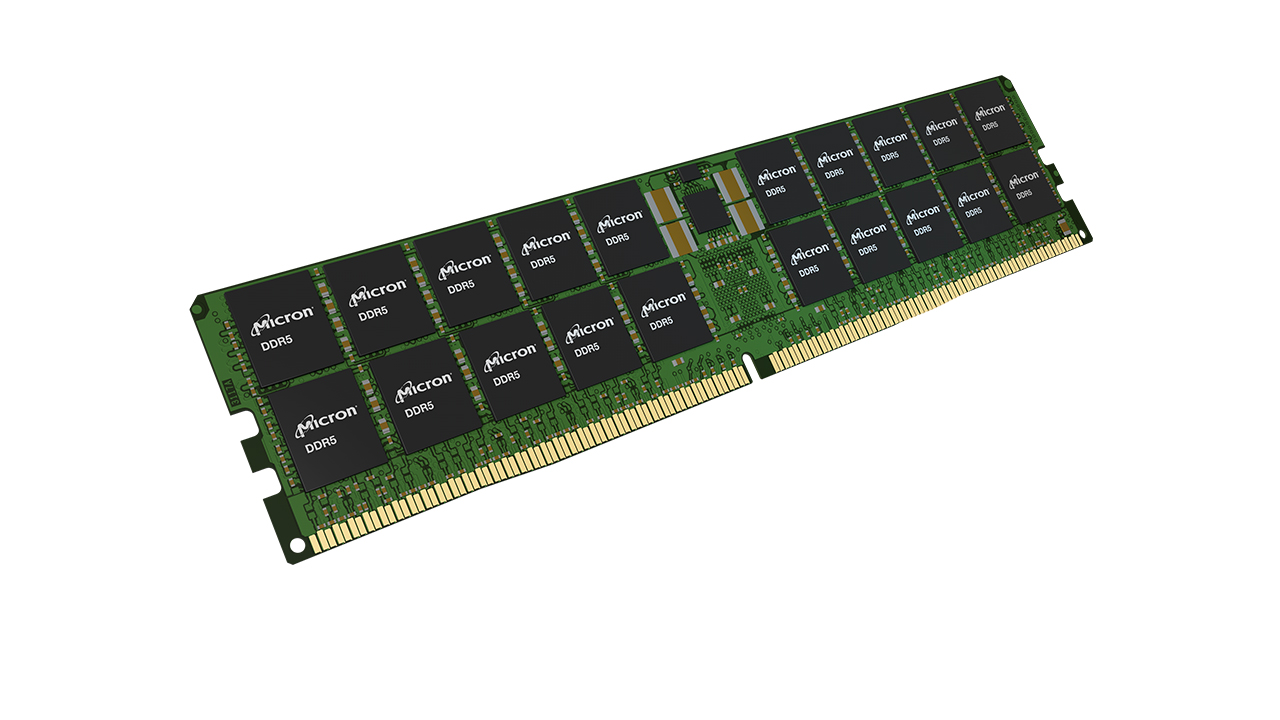Tech Talk
Understanding DRAM (Dynamic Random Access Memory)

Last updated 8 May 2024
What is DRAM?
Computer memory is generally classified as either internal or external memory. Internal memory is split into two categories, ROM and RAM. Internal memory is also called the prime or main memory and can store small amounts of data that can be accessed quickly while the computer is running. Examples of external memory are portable hard disks, USBs and compact discs.
Computer memory comes in all different forms; DRAM, SRAM, VRAM , SDRAM- the technology world is full of jargon and can be confusing. DRAM Dynamic Random Access Memory is a type of RAM or the memory of a computer and has been around since the mid-1960s. DRAM has been subject to many tweaks in design and comes in all different sizes and characteristics depending on your requirements. DRAM is the most common type of computer memory and is widely available.
DRAM is widely used in digital electronics where low-cost and high-capacity memory is required. One of the largest applications for DRAM is the main memory (called the “RAM”) in modern computers and graphics cards (where the “main memory” is called the graphics memory). It is also used in many portable devices and video game consoles. In contrast, SRAM, which is faster and more expensive than DRAM, is typically used where speed is of greater concern than cost, such as the cache memories in processors.
The techie stuff
DRAM
Pronounced DEE-RAM, DRAM is widely used as a computer’s main memory. Each DRAM memory cell is made up of a transistor and a capacitor within an integrated circuit, and a data bit is stored in the capacitor. Since transistors always leak a small amount, the capacitors will slowly discharge, causing information stored in it to drain; hence, DRAM has to be refreshed (given a new electronic charge) every few milliseconds to retain data. The main advantages of DRAM are its simple design and low cost in comparison to alternative types of memory. The main disadvantages of DRAM are its high volatility and high power consumption relative to other options.

SRAM
Pronounced S-RAM, SRAM is made up of four to six transistors. It keeps data in the memory as long as power is supplied to the system unlike DRAM, which has to be refreshed periodically. As such, SRAM is faster but also more expensive, making DRAM the more prevalent memory in computer systems. SRAM does not need to be refreshed because it operates on the principle of switching the current flow in one of two directions rather than holding a charge in place within a storage cell. SRAM is generally used for cache memory, which can be accessed more quickly than DRAM. SRAM is not commonly used for consumer applications and is more expensive than DRAM.
Natural Successor
DRAM is the successor to SRAM as it is cheaper to produce but SRAM is still available to buy mainly for bespoke system builders. So what are the common types of DRAM DDR1 is the oldest type of DRAM that Simms currently supply and is available from specialist industrial manufacturers and not commonly available for consumer applications? DDR4 is the latest version and is widely available for industrial and consumer markets. DDR5 is now becoming more available and will soon become the norm in a few years. To read more about DDR5 click here.
ROM and RAM
ROM stands for Read-Only Memory. It is non-volatile, which means it can retain data even without power. It is used mainly to start or boot up a computer.
Once the operating system is loaded, the computer uses RAM, which stands for Random-Access Memory, which temporarily stores data while the central processing unit (CPU) is executing other tasks. With more RAM on the computer, the less the CPU has to read data from the external or secondary memory (storage device such as an SSD which is built into your PC), allowing the computer to run faster. RAM is fast but it is volatile, which means it will not retain data if there is no power. It is therefore important to save data to the storage device before the system is turned off.
There are two main types of RAM: Dynamic RAM (DRAM) and Static RAM (SRAM). The table below highlights the key differences between the two.
| DRAM | SRAM | |
|---|---|---|
| Power consumption | low | high |
| Speed of Data access | slow | fast |
| Price/bit | low | high |
| Refresh required | yes | no |
| Random Access | no | yes |
| Density/chip | high | low |
| Typical usage | main memory | cache |
| Power retention | poor | good |
| Transistors/cell | 1 | 6 |
| Reliability | good | high |
| Construction | simple | complicated |
| Capacity | high | low |
At Simms, we stock a variety of DRAM for different types of applications. For your enthusiast or gamer, it will be HyperX DRAM, for consumer/corporate Kingston and Crucial, Micron and Intel. For demanding industrial applications ATP, Innodisk and APRO. Click on the different types of DRAM below to see our product range.
Size matters
DRAM comes in many shapes, sizes and capacities, each with its specific use.
- DIMM –A dual inline memory module (DIMM) is a small-scale circuit board that holds memory chips on the motherboard.
- RDIMM -A dual in-line memory module (DIMM) with improved Reliability. The RDIMM, which became available for DDR3 memory, uses a hardware register that buffers the control signals (not the application data) to the modules.
- UDIMM (unregistered memory) is a type of memory chip used mostly in desktop and laptop computers. More commonly called unbuffered memory, UDIMMs run faster than registered memory (RDIMM) and cost less, but are not quite as stable as RDIMMs
- SODIMM indicates a small outline DIMM (aka notebook form factor)
- LRDIMM is short for load-reduced dual inline memory modules. LRDIMM is a load-reduction (LR) DIMM (used in servers) that supports higher densities than RDIMMs and contains a memory buffer (MB) chip, as opposed to a register, in order to reduce and minimise the load on the server memory bus.
- ECC (which stands for Error Correction Code) RAM is very popular in servers or other systems with high-value data. It protects against data corruption by automatically detecting and correcting memory errors. Standard RAM uses banks of eight memory chips in which data is stored and provided to the CPU on demand.